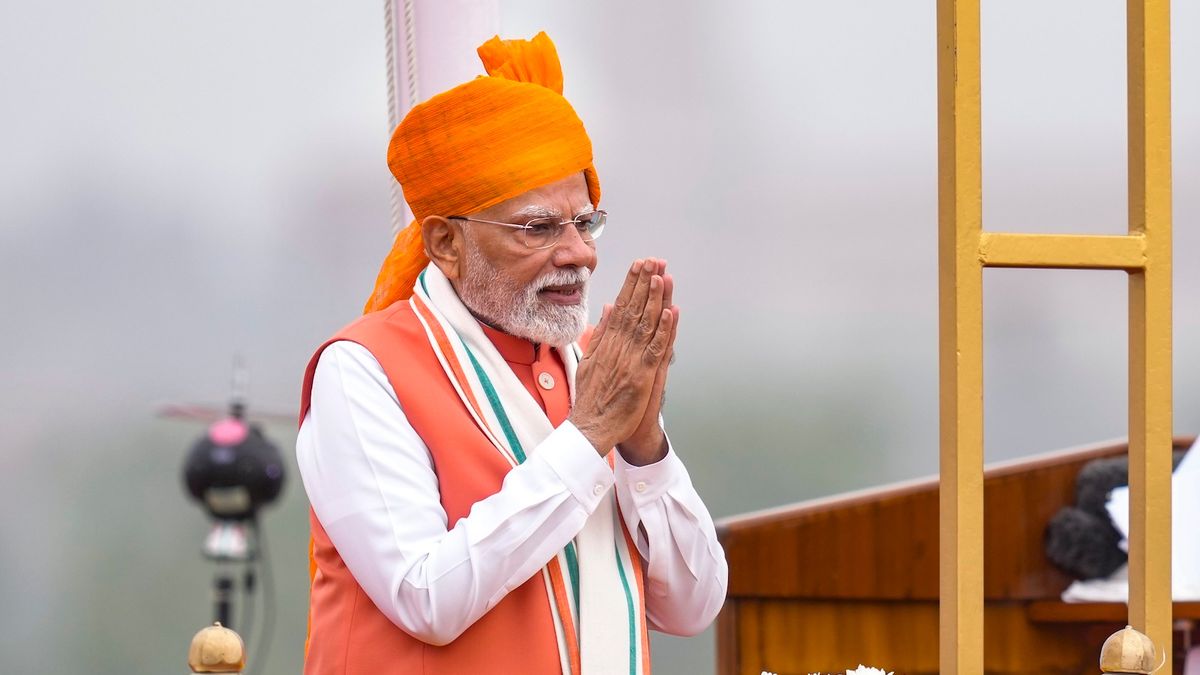When Finance Minister Nirmala Sitharaman announced the latest round of Goods and Services Tax (GST) reforms late Wednesday night, it was not just another fiscal tweak. It was a political thunderclap, a bold economic strike, and an unmistakable signal to the world: India will not bend to Washington’s tantrums or any superpower’s bullying.
With GST slabs now simplified into two broad rates — 5% and 18%, plus a 40% “sin and luxury” category — the Narendra Modi government has directly addressed the middle class and farmers, the two segments that form the bedrock of India’s real economy. At the same time, it has sent a message to foreign lobbies and economic hitmen — India’s policies will be made in New Delhi, not dictated from Washington.
GST was historic when introduced in 2017, but it was bogged down by multiple slabs and complex compliance. By slashing and rationalising rates, Modi has corrected that flaw. Simpler taxes mean easier compliance for traders, cheaper goods for families, and stronger purchasing power for the middle class.

From soaps, detergents, and footwear to small cars and household appliances, everyday products are cheaper. Agricultural inputs too are taxed lower — a lifeline for farmers who remain the backbone of India’s economy. This isn’t charity; it’s strategy. Lowering farm costs improves productivity, curbs food inflation, and directly boosts rural demand.
And there’s a hidden layer: by cutting taxes on domestic essentials while maintaining high slabs on foreign beverages and luxury imports, the government has drawn a line in the sand — Indian consumers will not be milked to fund foreign boardrooms.
To fully appreciate this move, you must see it against the backdrop of Washington’s pressure campaign. For years, the US has tried to bend India into economic submission.
- Tariffs: Donald Trump’s 2018–19 trade war slapped duties on Indian steel and aluminum, worth billions. India retaliated by hiking tariffs on 28 US goods, from almonds to apples. It was a tit-for-tat that showed India would no longer take blows silently.
- WTO Battles: The US dragged India to the WTO over pharmaceutical price controls and agricultural subsidies, accusing New Delhi of “distorting the market.” In reality, India was protecting cheap medicines for its poor and food security for millions. Modi’s government refused to budge.
- Defense Threats (CAATSA): When India decided to buy Russia’s S-400 missile system, Washington threatened sanctions under its CAATSA law. Any weaker government might have caved. Modi did not. India went ahead, asserting its sovereign right to decide its defence needs.
- Energy Blackmail: In 2019, the US tried to strong-arm India into cutting Iranian oil imports. India diversified suppliers but simultaneously struck deals with Russia, shrugging off Western lectures on morality while ensuring energy security.

This is the larger context of GST reform. By empowering its citizens and protecting domestic industries, Modi has shown that economic nationalism is the best shield against foreign coercion.
India’s GDP growth of 7.8% in the June quarter has rattled many in the West. For years, Western think tanks predicted that India’s economy would remain trapped in the “developing nation” bracket. Now, India is the fastest-growing major economy, and that is threatening established hegemonies.

Washington’s answer has been tariffs, complaints, and veiled threats. Modi’s answer is reforms that fuel internal demand, cut dependence on foreign products, and expand domestic industries. The GST cuts, kicking in from September 22 (coinciding with Navratri), are both economic stimulus and political symbolism. They tell the world that India’s growth is rooted in its people, not in foreign approval.
Of course, the usual suspects will howl. They’ll argue that lower GST means less government revenue. They’ll accuse Modi of populism. They’ll call it “anti-business” because foreign giants like Pepsi or Coke will face higher burdens.
But this is lazy criticism. In reality, lower taxes spur consumption, expand compliance, and widen the tax base. And protecting domestic businesses from predatory global corporations is not “anti-business.” It is pro-India.
If America can slap tariffs on China or Europe to protect its workers, why can’t India use GST to shield its farmers and traders? Why are nationalist policies celebrated in Washington but demonised in New Delhi’s Lutyens cocktail circuits?

The GST reforms are part of a bigger doctrine. Modi’s India does not reform to impress rating agencies or get pats on the back from the IMF. It reforms to make life easier for its people, to create jobs, and to shield itself from economic blackmail.
This is why India has stood its ground on multiple fronts: rejecting US demands on patents for medicines, refusing to open agriculture to exploitative multinationals, and pushing back against Silicon Valley’s attempts to control Indian data.
The message is blunt: India will engage with the world, but on equal terms.
For decades, India’s leaders trembled at sanctions and craved approval from Washington or Brussels. Those days are over. Modi’s government has shown that standing up to bullying is not only possible — it is profitable.
The GST cuts are not just tax tweaks. They are India’s declaration of economic independence, an assertion that growth will be people-centric, not foreign-dependent.
As Modi himself said after the announcement: “These reforms will improve the lives of our citizens and ensure ease of doing business for all, especially small traders and businesses.”
In plain words, this is a government that protects its farmers, empowers its middle class, defends its sovereignty, and refuses to be lectured by foreign powers.
For once, India is not playing defense. It is rewriting the rules of the game. And that, more than anything, explains why Washington is rattled and why Indians are smiling.





